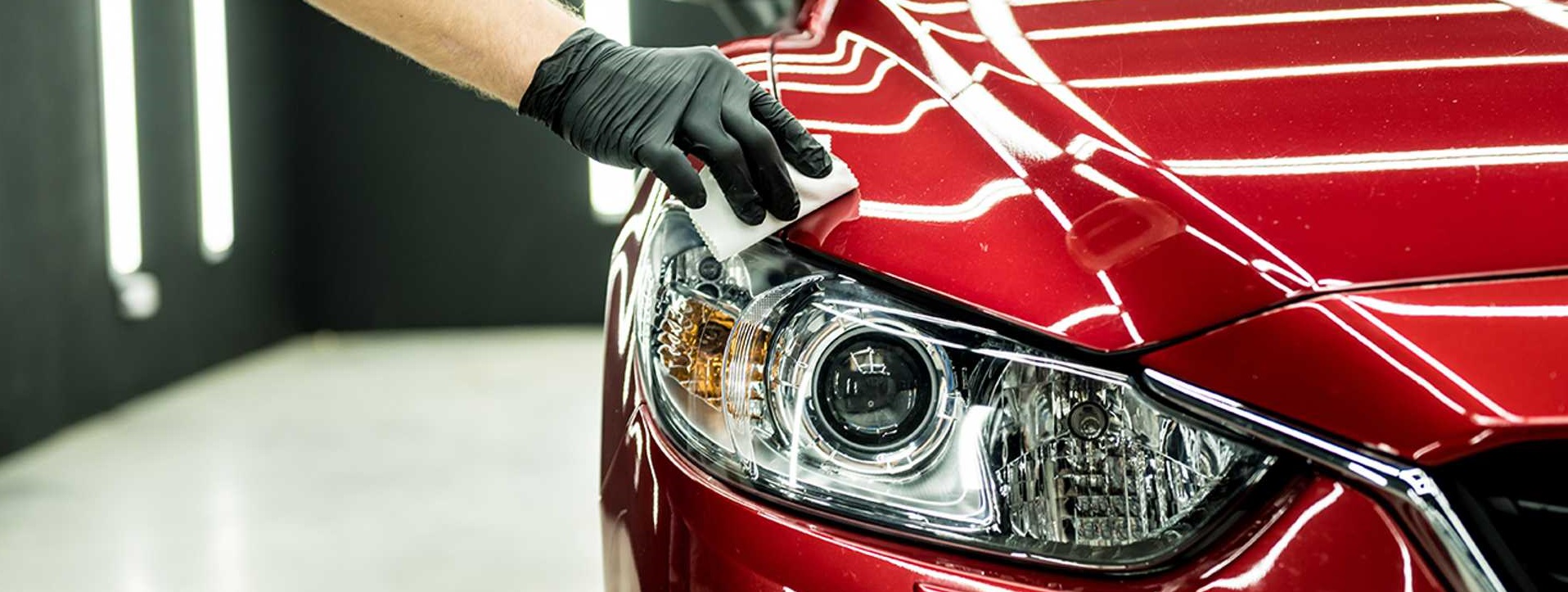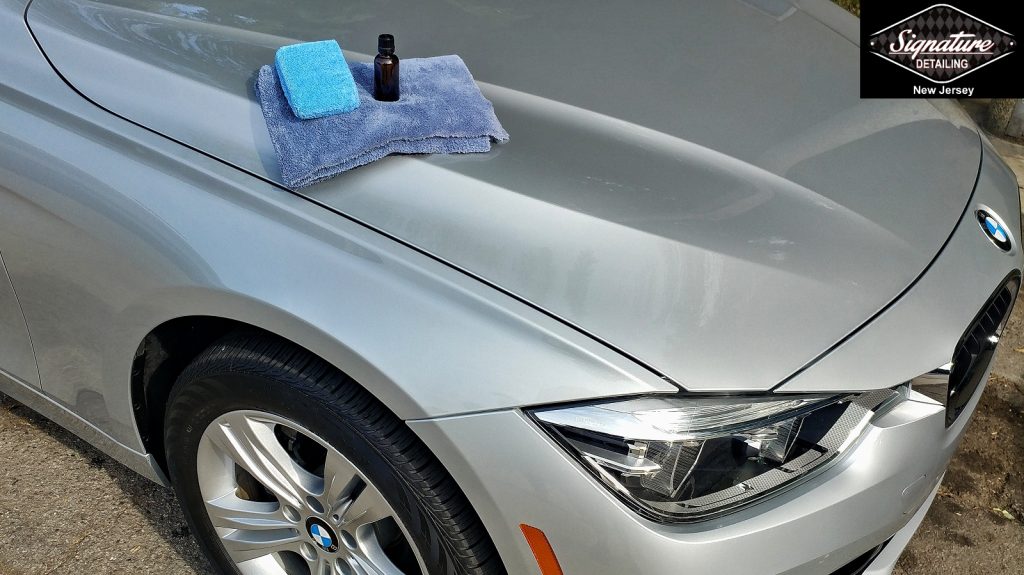The Function of Ceramic Coating Philadelphia in Protecting Against Scratches and Damage
The Function of Ceramic Coating Philadelphia in Protecting Against Scratches and Damage
Blog Article
Why Ceramic Covering Is the Ultimate Service for a Flawless Finish
Ceramic coating has actually become a leading service for those seeking a remarkable surface for their lorries, thanks to its amazing longevity and safety functions. This innovative liquid polymer not just bonds perfectly with manufacturing facility paint however additionally provides an awesome obstacle versus common risks such as scratches, UV rays, and toxic wastes. Moreover, its hydrophobic properties streamline upkeep while improving aesthetic allure. Recognizing just how this modern technology compares to typical approaches and exploring its application subtleties can expose also extra concerning its worth. What variables truly set ceramic finish apart?
What Is Ceramic Layer?

When applied correctly, ceramic finishing creates a hydrophobic surface that fends off water and dust, making it much easier to cleanse and keep. Unlike traditional waxes or sealers, which normally provide brief security, ceramic finishings can last for a number of years, relying on the item high quality and application method. The procedure of using ceramic finish requires precise preparation, consisting of thorough cleansing and often paint correction, to guarantee optimal bonding and effectiveness.
Ceramic layers are not restricted to automotive surface areas; they can additionally be utilized on various products, including glass, steel, and plastics, supplying a versatile solution for boosting security. Generally, ceramic layer represents a substantial development in surface security technology, integrating both visual and practical advantages for a broad variety of applications.
Advantages of Ceramic Layer
While numerous surface area protection alternatives exist, the benefits of ceramic finishing attract attention because of its distinct properties and durable performance. One of the primary benefits is its extraordinary longevity. Ceramic Coating Philadelphia. Unlike standard wax or sealants that require regular reapplication, ceramic finishings give a resilient layer that can last for a number of years, substantially reducing upkeep initiatives
An additional significant benefit is improved protection against environmental impurities. Ceramic finishes develop a hydrophobic surface area that pushes back water, dirt, and various toxins, making it less complicated to cleanse. This function not just preserves the vehicle's look yet additionally decreases the danger of corrosion and oxidation, especially in extreme weather.
Moreover, ceramic layers provide exceptional resistance to UV rays, preventing fading and deterioration of paint with time. This UV defense is important for keeping the aesthetic worth of surface areas and cars exposed to direct sunshine.
Furthermore, the glossy coating attained with ceramic layer improves the total aesthetic charm, offering surfaces a showroom-quality sparkle. In general, ceramic finishes stand for a significant improvement in surface area security modern technology, supplying long-lasting benefits that accommodate both aesthetic and practical needs.
Just How It Works
Understanding the science behind ceramic coverings reveals exactly how they offer such remarkable security and longevity. At its core, a ceramic coating is a liquid polymer that chemically bonds with the automobile's manufacturing facility paint. This bonding produces a protective layer that is both hydrophobic and oleophobic, repelling water, dirt, and oil. The main part of a lot of ceramic layers is silicon dioxide (SiO2), which is originated from quartz. This substance adds to the covering's firmness and resistance to scrapes, UV rays, and ecological impurities.
The application process involves several actions, including surface prep work, which is vital to attaining optimum bond. When used, the finishing undergoes a curing process, throughout which it sets and develops a semi-permanent bond with the paint surface area. This bond is what differentiates ceramic coverings from traditional waxes and sealants, giving a longer-lasting protective barrier that can endure for several years.
Furthermore, the thickness of the finishing can boost its safety top qualities, making certain that it can endure rough problems. Inevitably, the scientific research of ceramic coatings integrates advanced products with innovative application techniques to deliver an exceptional degree of defense and aesthetic improvement for vehicles.
Contrast With Traditional Techniques
When contrasted to traditional paint security approaches such as waxes and sealants,The benefits of ceramic finishings become specifically evident. While waxes offer a short-lived shine, commonly lasting a couple of weeks to a number of months, ceramic finishings give a lasting safety layer that can withstand for a number of years. This resilience considerably lowers the frequency of reapplication, making ceramic layers an extra affordable solution over time.
Furthermore, standard methods often call for considerable preparation and several applications to accomplish an adequate degree of security. In comparison, ceramic finishes bond at a molecular level with the lorry's surface area, producing a robust guard against environmental contaminants like UV rays, acid rainfall, and road salts. This bond improves the automobile's resistance to scrapes and swirl marks, which prevail with typical waxes and anonymous sealers.
Additionally, the hydrophobic homes of ceramic finishes drive away water and dust, resulting in much easier cleaning and upkeep. In comparison, wax and sealant-treated surfaces can bring in crud, necessitating even more regular cleaning - Ceramic Coating Philadelphia. Generally, ceramic layers not only supply superior security yet additionally deliver an extra visually appealing and enduring coating, developing them as the recommended choice basics for discerning vehicle proprietors
Application and Maintenance Tips

Using a foam applicator, use the layer in little areas, adhering to the supplier's guidelines regarding density and overlap. Allow adequate treating time in between layers, normally 24 hours, to guarantee proper bonding. After application, it is important to avoid direct exposure to water or severe elements for at least a week to enable the covering to fully heal.
In addition, making use of a ceramic upkeep spray can improve the finishing's hydrophobic residential or commercial properties and long life. Regular evaluations for any kind of indications of wear will certainly help keep the special info coating's stability and maintain that immaculate coating.
Final Thought
In verdict, ceramic covering emerges as a remarkable alternative for accomplishing a flawless vehicle surface. By creating a durable bond with manufacturing facility paint, ceramic covering properly guards against scratches, UV rays, and ecological pollutants.

Report this page